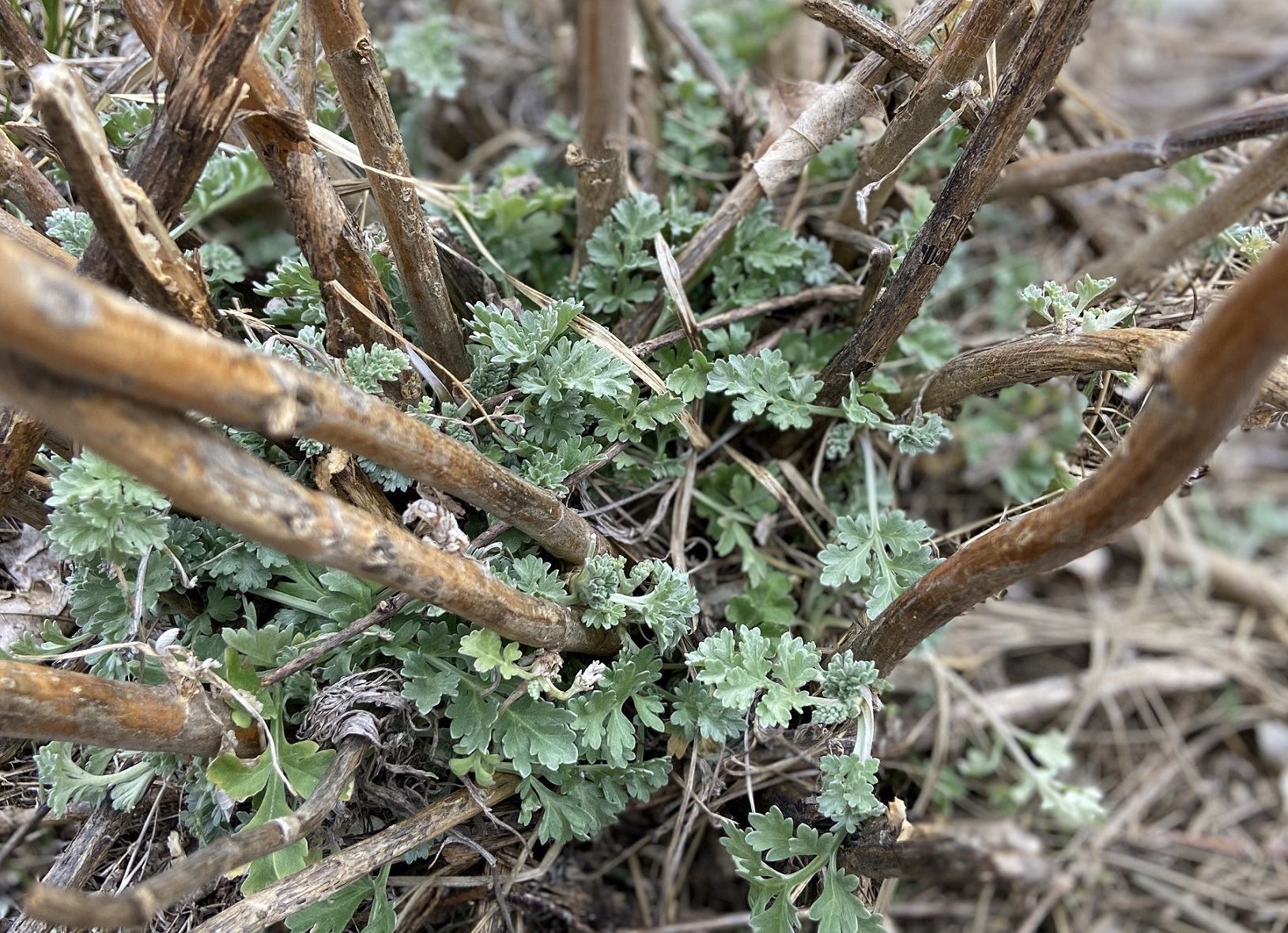Invasive Plants Watch List Priority: AbsinthWormwood

Absinth wormwood (Artemisia absinthium) is a Nebraska Invasive Plants Watch List priority that is spreading rapidly and making a big impact to Nebraska grasslands. Infestations of absinth wormwood have been traced back to contaminated hay brought in from out of state following the 2012 drought. In some other areas, gravel containing seed was imported from infested areas. States including North Dakota, South Dakota, and Colorado have listed absinth wormwood as a noxious weed.
Absinth wormwood is a broadleaf perennial that grows in a clump of multiple 2 to 5 foot tall, branched stems that are woody at the base. Supported by a large taproot, each fall the plant dies back to the ground and initiates growth in the spring from new buds at the soil surface. Absinth wormwood has a sage odor and appearance with light to olive green leaves covered with silky hairs giving a silver appearance. Deeply lobed leaves are divided into leaflets and attach alternately to the stem.
Seeds germinate from late spring through early fall. In the first year, the plant forms a rosette that does not produce a flower. The following year, growth resumes in April and May and flowers between July and September. Small, inconspicuous yellow flowers are produced at each upper leaf node with each stem capable of producing thousands of seeds.
Found primarily in disturbed areas such as areas of heavy feeding, overgrazed pastures, hay lots, calving lots and corrals, absinth wormwood establishes quickly in both dry and moist soils. Absinth wormwood not only has no grazing value, but can be toxic to livestock forced to consume it.
If unnoticed, absinth wormwood is likely to spread seed that will move into pastures and rangelands throughout the state. Single plants on the state highways or county roads are likely the result of infested hay that has been hauled down those roads. Infestations typically spread from areas where contaminated hay was stored or fed. Seeds can remain viable in the soil for up to four years so be vigilant in checking previously infected areas to make sure seeds in the soil have not sprouted and established new plants.
Proper grazing management helps to maintain a healthy and vigorous grassland and reduces the likelihood of undesirable plant invasion. Prevent introducing invasive plants by verifying the source of hay and other materials brought on to your ranch. Feeding hay in dry lot settings can help condense weed seed spread.
During drought, road ditches and CRP acres are often opened for haying, however these areas are susceptible to invasive weeds. Be cautious when harvesting these acres or purchasing hay from unknown sources and be sure to understand where the hay was harvested. Purchasing hay certified as weed free by county weed superintendents prior to harvest is an option but can be more expensive. Contact your local weed superintendent about certifying your acres as weed free.
Spot spraying with appropriate herbicides in the first year while in the rosette stage, or in subsequent years while the plant is less than 12-24 inches tall will improve control and reduce the spread of absinth wormwood. As the plant grows and reaches maturity, control is significantly less effective. Effective herbicides listed in the Nebraska Extension Circular EC130 2020 Guide for Weed, Disease, and Insect Management in Nebraska include Milestone™ (5-7oz per acre), Transline® (12-14oz per acre), and GrazonNext® XL (24-32oz per acre). Additional herbicides labeled for absinth wormwood include DuraCor™ and TerraVue™. Be sure to read, understand, and follow all label directions, especially grazing restrictions on pastures and rangelands.

Control can also be achieved for individual plants or small patches, with hand pulling or digging up roots when the soil is moist. Be sure to remove as much root material as possible to prevent sprouting. Where accessible, mowing can prevent seed production if done several times throughout the growing season, but generally will not reduce the size or density of the infestation unless other methods are used in combination with mowing.
Early detection and rapid response are important to catch and eradicate absinth wormwood before establishing and spreading seeds. Being able to identify absinth wormwood and how it differs from similar looking native plants can help producers be able to identify this invasive and aggressive plant. Contact the county weed superintendent or Extension office with plant identification questions.
Interviews with the authors of BeefWatch newsletter articles become available throughout the month of publication and are accessible at https://go.unl.edu/podcast.
